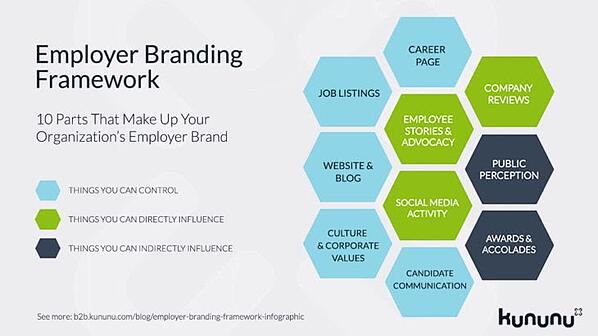How Does Big Data use in Human Resource Management?
 |
| Image 01. Source: www.greatpeopleinside.com |
How Does Big
Data use in Human Resource Management?
Big data has arisen
because the gamechanger in every business and organizational department,
particularly the human resources (HR). Developing big data with HR data
analytics can support inform and expand virtually each part of HR, including
recruitment, training, development, performance, and compensation. By using big
data, HR professionals can make cleverer decisions and help an organization
meet its goals more efficiently.
The key innovation of big
data for HRM is that the data is big. Data is a valuable resource for
organizations since delivers information (knowledge) letting the
decision-making becomes a data-based procedure, not intuition or wisdom (Roberts,
2013).
The rise in the usage of
big data and data analytics by businesses has also improved the demand for
professionals with precise profiles (Barnes, 2014 Cited in Garcia-Arroya and
Segovia, 2019).
Big also means data risks
management, due to the struggle to control volume, velocity and diversity data,
and manipulate sensible staff or reputational information (Calvard & Jeske,
2018).
Does HR need
big data?
Big data in HR has made it
likely to gather and evaluate data before, during, and after the hiring process
to assist inform hiring choices and build a more competent workforce.
Big data can give HR
managers the capability to screen and track the productivity of recruitment
efforts to well identify the most efficient plans that attract the perfect
applicants. In this way, big data can rationalize hiring procedures and make it
easier to reduce large pools of applicants to a lesser, more qualified pool.
In addition, it can give
HR departments the prospect to acknowledge employee patterns and trends and
develop plans that are intended to enhance loyalty and reduce turnover. With
big data, HR managers can recognize what's essentially to not only retain top
talent, but to retain it also.
 |
| Figure 01. Source: www.glocalthinking.com |
7 benefits of
big data in HR
1. Recruit the best talent
HR managers can screen through thousands of resumes and narrow down their exploration to the most promising prospects.
2. Prioritize
recruitment channels
Taking advantage of
massive data can disclose which recruitment methods are bringing outcomes and
which of them aren’t quite effective.
3. Detect
employee health and injuries
Big data permits to detect
and appropriately prepare for common well-being issues in their companies. For
instance, it may disclose that employees are frequently sick between December
and March, prompting the hiring of extra temporary staff during this time
period.
4. Improve
training
Big data gives companies
the prospect to calculate how effective a probable training initiative, which
may decrease the danger of coaching programs that cause poor staff retention.
5. Enhance
employee motivation and engagement
Organizations can
recognize and reward top performers. Through data governance solutions, abuses
of policies or standards can be recognized, and quick action can be taken to
resolve these issues.
6. Increase
retention
HR managers can rapidly
figure out what reasons employees to leave and implement programs to rise
retention.
7. Forecast
the future
Companies can sight HR
patterns and trends, and use that information to make forecasts about the
future on HR tactic and avoid matters with hiring, retention, and performance.
Global Context
VINCI, a worldwide leader
in construction with over 185,000 staffs spread across 2,100 companies, uses
big data to advance its HR functions. Through big data, VINCI is able to
effectively accomplish staff data and make staff communications, onboarding,
and firing employment more efficient.
The organization can now
simply adapt to company-wide changes, having an improved understanding of HR,
and progress the overall efficiency of human capital.
(Source: KPMG US, 2020 available at www.youtube.com)
Conclusion
Adopting big data in HRM
largely includes a procedure that must be followed to succeed. For the data to
add value and to be a competitive benefit for HRM and organizations, they must
provide valuable information and knowledge for decision-making and predicting
rationally effective forecasts.
References
Calvard, T. S., & Jeske, D. (2018). Developing human resource data risk management in the age of big data. International Journal of Information Management, 43, 159–164. doi: 10.1016/j.ijinfomgt.2018.07.011 Available at <https://www.pure.ed.ac.uk/ws/portalfiles/portal/70339678/Calvard_Jeske_2018_risk_IJIM_ms.pdf> (Accessed on 14th August 2021)
Garcia-Arroyo, J., and Segovia, A.O. (2019) Big data contributions to human resource management: a systematic review Available at <https://www.researchgate.net/publication/336363935_Big_data_contributions_to_human_resource_management_a_systematic_review> (Accessed on 14th August 2021)
Graham, J.T. (2021) Big Data in HR Available in <https://blog.sage.hr/10-benefits-of-using-hr-big-data-in-human-resources/> (Accessed on 14th August 2021)
Roberts, B. (2013). The benefits of big data. HRMagazine; Alexandria, 59(10), 20–22, 24, 26, 28, 30. Retrieved from <https://search.proquest.com/docview/1445137722? accountid=14609. Available at https://www.shrm.org/hr-today/news/hr-magazine/pages/1013-big-data.aspx> (Accessed on 14th August 2021)
Talend, <https://www.talend.com/resources/big-data-hr-analytics/ 2021> (Accessed on 14th August 2021)
























